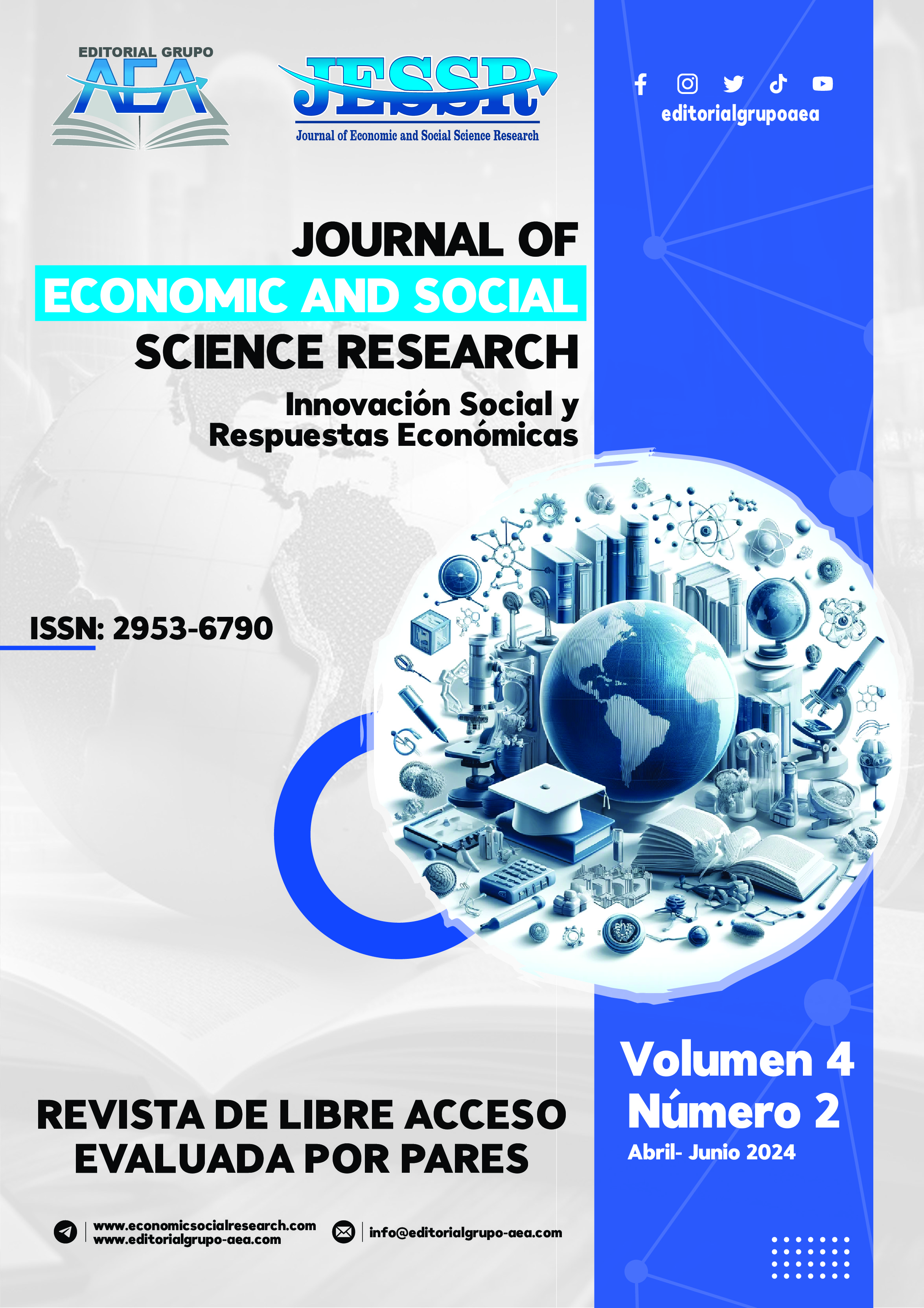Linguistic sign and its theoretical basis in young people
Main Article Content
Abstract
The linguistic sign is a perceptible and representative unit of human communication, which refers to the substitution of words in a linguistic system; where the oral signs of a language have different meanings. It justifies the use of certain characters that can cause writing and spelling problems, affecting academic performance and the ability to communicate; the same that seeks to identify new symbols and understand their impact on young people, who influence communication trends. To identify the linguistic signs used by young people based on a theoretical framework. A quantitative approach was used, where an analysis that goes from the general to the particular is employed. For which a survey of closed questions was used to initiate the research; where the occupied population consists of 20 young people attended monthly, considered as a sample. Young people do not know linguistic symbols well, but they use gestures, facial expressions and emojis in their verbal and written communication; for which images, sounds and colors are used as linguistic signs. This type of communication is common on platforms such as Facebook and WhatsApp; so they also use body language in the study of various subjects. The linguistic signs used by young people were identified as emojis to express sentences with fewer words, as well as nonverbal communication through gestures, eye contact, body language and facial expressions.
Downloads
Article Details
Section

This work is licensed under a Creative Commons Attribution-NonCommercial 4.0 International License.
How to Cite
References
Formación Audiovisual. (2014). Tipos de Semiótica. https://formacionaudiovisual.blogspot.com/2014/03/tipos-de-semiotica.html
Gallegos, N. (2020). La influencia de la jerga juvenil en el lenguaje de los jóvenes estudiantes. Universidad Central del Ecuador.
Herrera-Sánchez, P. J., & Mina-Villalta, G. Y. (2023). Riesgos de la mala higiene de los equipos quirúrgicos. Journal of Economic and Social Science Research, 3(1). https://doi.org/10.55813/gaea/jessr/v3/n1/63
Hussein, A. (2012). El signo lingüístico según la teoría esquema básico de la referencia. MEAH, SECCIÓN ÁRABE-ISLAM, 61, 3–23.
Ibarra, V. (2015). La semiótica y su influencia en el aprendizaje de los estudiantes del Octavo Año de Educación General Básica de la Unidad Educativa Técnica Yaruquí de la Parroquia de Yaruquí, Cantón Quito, Provincia de Pichincha [Universidad Técnica de Ambato]. https://repositorio.uta.edu.ec/bitstream/123456789/35047/1/TRABAJO APROBADO LESLIE QUINTANA.pdf
Linares, F. (2022). Semiotic of Current Affairs and Current Semiotics. Signa, 31(2022), 83–94. https://doi.org/10.5944/signa.vol31.2022.32193
Martínez, A., Ortega, J., & Alba, J. (2021). Lenguaje: instrumento del desarrollo humano. Revista Digital Universitaria, 22(5). https://doi.org/10.22201/cuaieed.16076079e.2021.22.5.3
Medina, P. (2015). Saussure: El Signo Lingüístico y La Teoría del Valor. Las Nubes, 17, 1–12. http://www.ub.edu/las_nubes/archivo/17/teoria-valor.pdf
Novotny, L. (2022). La distribución de un signo lingüístico : Un análisis semiótico-semántico de la forma inglesa through. Universidad Nacional de La Plata.
Oliveros, E. (2020). Iuri Lotman: interacciones entre semiótica y educación. Cultura Educación Y Sociedad, 11(1), 139–150. https://doi.org/10.17981/cultedusoc.11.1.2020.10
Pérez, M. (2022). El lenguaje simbólico: un cambio en la comunicación de los jóvenes de la Era Digital. Percepción de los Estudiantes de Educación Secundaria y Bachillerato. Universidad de Sevilla.
Polo, A. (2019). El lenguaje de los estudiantes del distrito de Mollepata en las redes sociales [Universidad Nacional De Tumbes]. http://repositorio.untumbes.edu.pe/handle/UNITUMBES/1486
Quispe-Rojas, R., Pacovilca Alejo, O. V., Zea-Montesinos, C. C., Ureta-Jurado, R., Camposano-Córdova, Y. F., Jauregui-Sueldo, C. J., & Sánchez-Ramos, B. O. (2023). Ansiedad en la era COVID-19: Estado, Rasgo y Resiliencia. In Ansiedad en la era COVID-19: Estado, Rasgo y Resiliencia. https://doi.org/10.55813/egaea.l.2022.37
Salazar-Villegas, B., Lopez-Mallama, O. M., & Mantilla-Mejía, H. (2023). Historia de la Salud en Colombia: del Periodo Precolombino a el Periodo Higienista 1953. Journal of Economic and Social Science Research, 3(3). https://doi.org/10.55813/gaea/jessr/v3/n3/69
Tappan, M. (2013). La Semiótica como Herramienta Teórica en el Proceso de Conceptualización de un Taller de Diseño. Revista Digital de Diseño Gráfico, 7(222), 2–8.
Tovar, R., & Guanoquiza, C. (2019). El signo lingüístico y sus concepciones teóricas. Ciencia y Tecnología Al Servicio Del Pueblo, 3(1), 107–117.
Valarezo-Bravo, O. F., Samaniego-Rojas, N. del C., Jara-Galdeman, G., Córdova Neira, K., & García Riofrío, J. C. (2023). Diagnóstico situacional y caracterización del perfil epidemiológico de las zonas de intervención e influencia del proyecto ProSalud frontera sur, cantones Huaquillas y Macará. In Diagnóstico situacional y caracterización del perfil epidemiológico de las zonas de intervención e influencia del proyecto ProSalud frontera sur, cantones Huaquillas y Macará (1st ed.). Editorial Grupo AEA. https://doi.org/10.55813/egaea.l.2022.17
Vallejo-López, A. B., Ramírez-Amaya, J., Kou-Guzmán, J., Valdez-Aguagallo, F. R., & Ramírez- Morán, L. D. (2023). Enfermedades Respiratorias del Siglo XXI. In Enfermedades Respiratorias del Siglo XXI. https://doi.org/10.55813/egaea.l.2022.36
Velásquez, P. (2016). Análisis léxico-semántico y lectura de algunos íconos en conversaciones por Facebook. Universidad de San Carlos de Guatemala.





